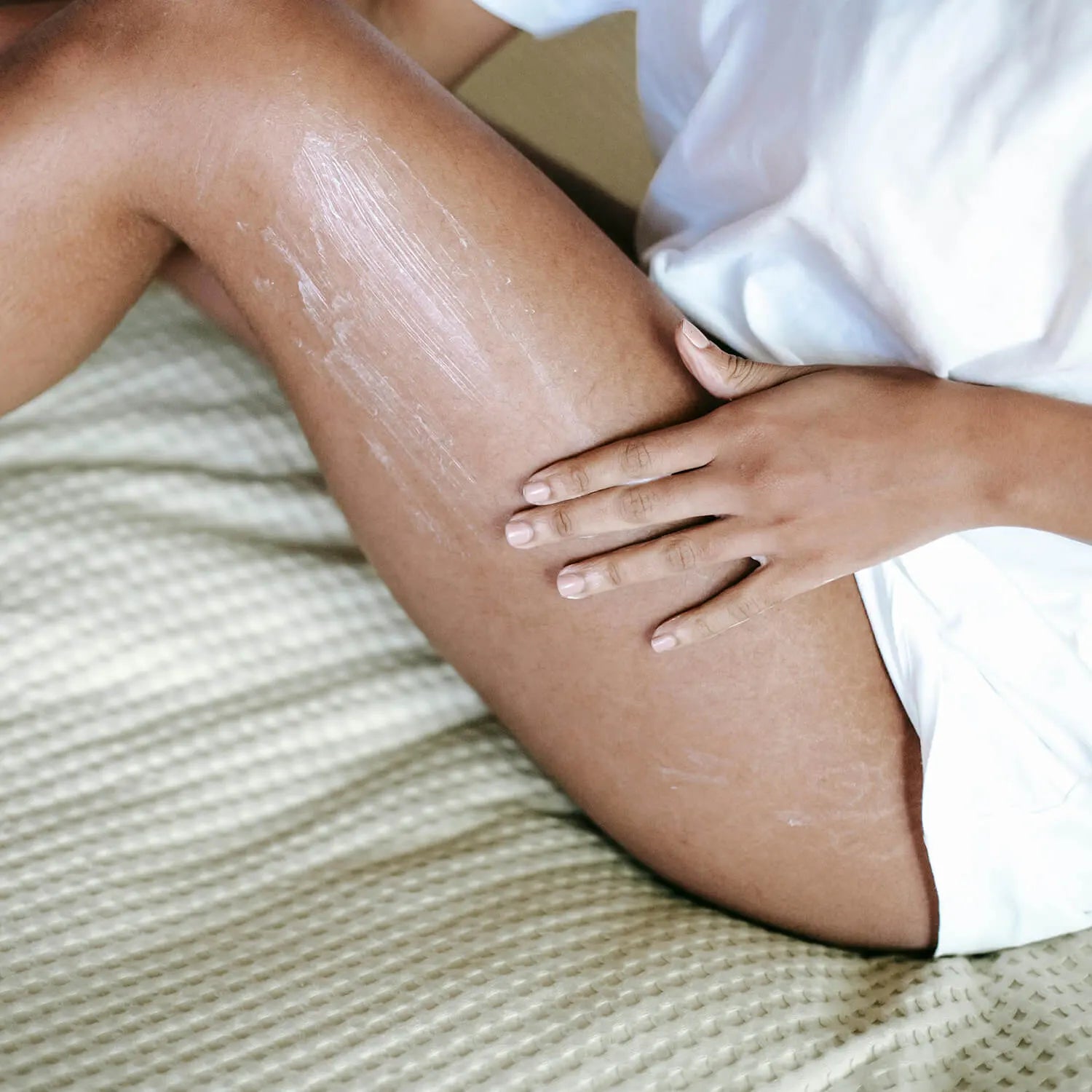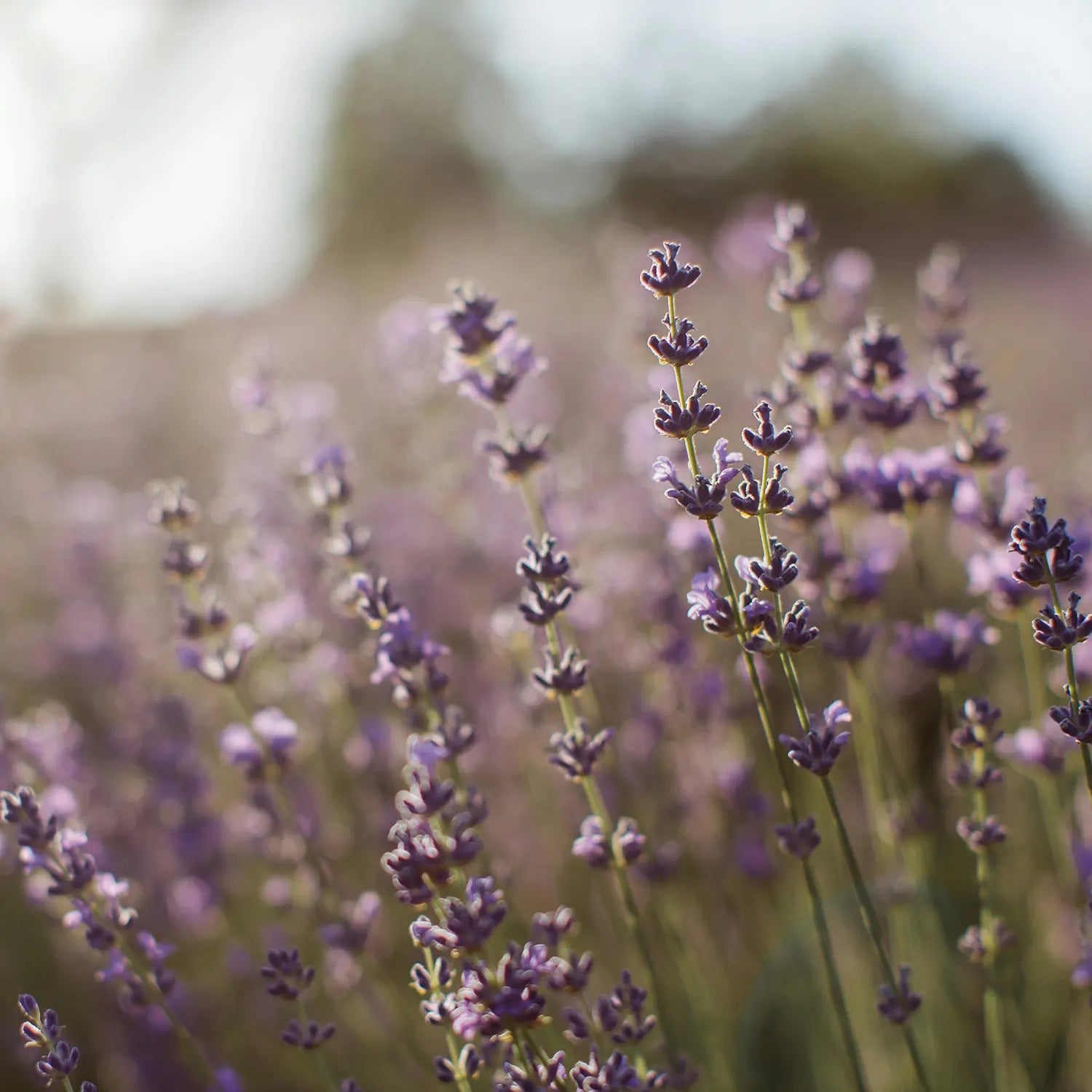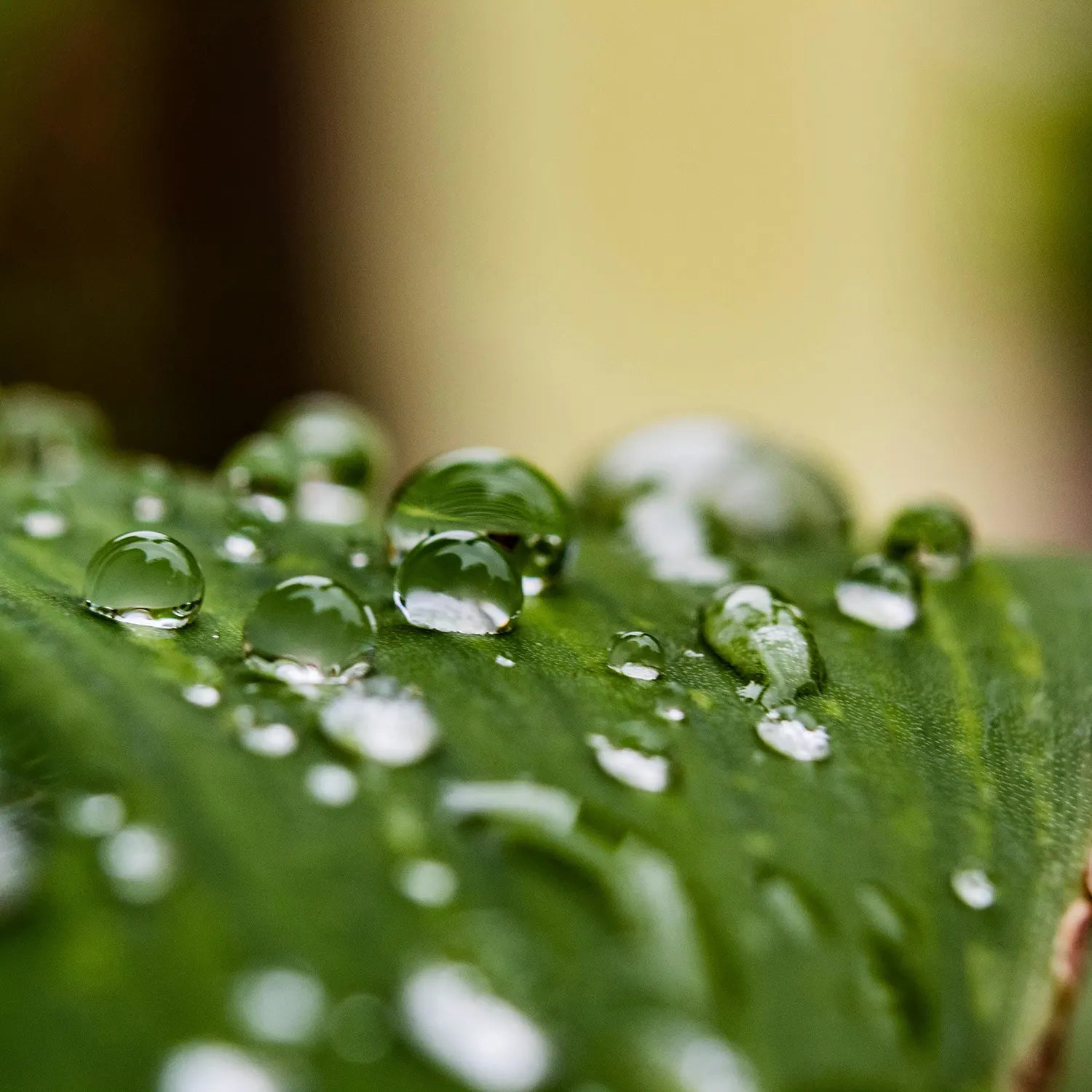
Care tips for sandpaper skin – causes, symptoms & natural help
Keratosis pilaris is a harmless but cosmetically disturbing skin condition. Learn how you can visibly improve your skin's appearance and strengthen the skin barrier with gentle, nature-based care—free of fragrances, emulsifiers, or alcohol.
What is keratosis pilaris?
Pumice skin – also known as keratosis pilaris or hyperkeratosis – is a widespread, cosmetically disturbing, but harmless skin disorder characterized by keratinization. The skin appears rough, uneven, and permanently covered with small pimples or goosebumps. Especially in summer, however, these small, persistent spots on the skin are particularly annoying, when we'd love to show a little more skin.
Keratosis pilaris is not contagious and is considered incurable—however, with proper, consistent care, the skin's appearance can improve significantly. This supposed "permanent goosebumps" blemish is particularly common in young adulthood, but often improves with age, so that only around 40% of adults show signs of keratosis pilaris.
The aim of the care is to loosen excessive keratinization, strengthen the skin barrier and provide moisture.
Where does keratosis pilaris occur? Signs of keratosis pilaris can appear anywhere on the body, but the skin on the upper arms (especially the outer back), thighs, buttocks, and also the neck and even the face are particularly susceptible.
How do you recognize sandpaper skin?
The typical symptoms of keratosis pilaris are small, firm, usually white or reddish bumps on the skin's surface. They occur particularly on the outer sides of the upper arms, thighs, buttocks, or, less frequently, on the face (especially in the cheek area).
The skin appears rough, uneven, and reminiscent of "permanent goosebumps." Psoriasis is often accompanied by itching, redness, and increased sensitivity – especially in dry skin or during the winter. This is caused by a compromised skin barrier, which causes the skin to dry out more quickly and become more susceptible to irritants or germs.
Causes and triggers of sandpaper skin
Psoriasis is caused by excessive keratinization of the hair follicles: The skin produces too much keratin—a protein naturally found in hair and nails. This keratin clogs the follicle openings, leading to small "horny plugs."
The exact causes have not yet been conclusively researched, but several factors contribute to its development:
- Genetic predisposition: Keratosis pilaris often occurs in families.
- Dry skin & impaired skin barrier: People with very dry, sensitive skin are particularly vulnerable.
- Climatic conditions: Cold temperatures and low humidity in winter usually significantly worsen the skin’s appearance.
- Concomitant diseases: There is often an association with neurodermatitis, asthma or allergic skin diseases.
- Diet: Although the connection between diet and keratosis pilaris is not scientifically established, sufferers report that avoiding certain foods such as gluten, sugar, white flour, and alcohol has alleviated the symptoms of keratosis pilaris. However, excessive consumption of these foods can impair the normal function and appearance of the skin, so reducing sugar, gluten, or alcohol often automatically leads to an improvement in the skin and thus also in keratosis pilaris.
Care tips for sandpaper skin – what really helps?
There is no standard medical treatment for keratosis pilaris, making targeted, skin-friendly care with natural ingredients wherever possible all the more important. Irritants, harsh cleansers, and fragrances should be avoided to avoid further stressing sensitive skin.
Very important : Just like pimples, you should not squeeze or scratch the horny plugs of the sandpaper skin, as this can cause inflammation and leave discoloration.
1. Gentle cleansing without surfactants
For keratosis pilaris, it's crucial to cleanse the skin gently without damaging its protective acid mantle. Instead of aggressive surfactants, cleansers with white mineral clay or mild sugar surfactants are suitable. These remove excess skin cells and dirt particles without washing out lipids or disrupting the skin's flora. The skin is soothed, strengthened, and optimally prepared for subsequent care.
2. Sulfate-free, mild shower gel for a velvety-soft skin feeling
Hot water and conventional shower gels can further dry out the skin. pH-neutral, moisturizing cleansing products based on natural lipids or amino acid surfactants are recommended. Such gentle formulations retain skin moisture and help prevent irritation. Perfume, alcohol, and synthetic dyes should be avoided, especially for those with atopic dermatitis or sensitive skin.
3. Intensive moisture – without urea
Adequate hydration is essential to smooth the rough patches of keratosis pilaris. While urea is often used in conventional cosmetics, it can cause irritation on sensitive skin. Plant-based alternatives such as aloe vera, beta-glucan, or hyaluronic acid bind moisture deep within the skin, promoting regeneration while also having a soothing effect – without compromising the skin's natural pH balance.
4. Emulsifier-free care with skin-identical lipids
Daily skincare should be as free as possible from traditional emulsifiers, as these can weaken the barrier function over time. Instead, the use of skin-identical lipids such as phosphatidylcholine , which are components of the natural cell membrane, is effective. These active ingredients support the formation of ceramides, promote a healthy lipid structure in the stratum corneum, and sustainably strengthen the skin against dehydration and external irritants.
5. Mechanical body scrubs
Regular, gentle exfoliation promotes the removal of excess dead skin cells and ensures a smoother complexion. Natural exfoliants such as finely ground oatmeal, rice powder, or jojoba wax beads are ideal for body care. Important : Avoid sharp-edged particles, as these can cause micro-injuries. Mechanical exfoliators, on the other hand, are less suitable for the face.
6. Fruit and salicylic acid peels
Chemical peels with fruit acids (AHA) or salicylic acid (BHA) specifically loosen dead skin cells on the surface and unclog clogged follicles. Low-dose acid peels (e.g., with 2% salicylic acid or 5% lactic acid) can be particularly helpful for more severe skin conditions on the body. Ensure that they are well tolerated and use these products no more than once or twice a week. Acids should be avoided for very sensitive skin, rosacea, or open sores.
7. Hyaluronic acid for smoother and softer skin
Hyaluronic acid can bind many times its own weight in water and store it in the skin. This improves the skin's moisture content over the long term, making it appear smoother and softer.
Conclusion: Care for sandpaper skin – natural & effective
Although keratosis pilaris is harmless, it can be cosmetically problematic. With a consistent, gentle skincare routine, the skin's appearance can be significantly improved. It's crucial to specifically strengthen the skin barrier and avoid irritants. Gentle cleansing without harsh surfactants, pH-neutral shower gel, moisturizing ingredients such as aloe vera or beta-glucan, and skin-identical lipids all help alleviate the symptoms.
In addition, regular, gentle exfoliations—mechanical or chemical—can help loosen dead skin cells and smooth the skin's texture. It's important to choose a customized skincare routine with minimalist formulations, free of fragrances, emulsifiers, or alcohol.
With natural, non-irritating cosmetics, rough skin can be effectively and skin-friendly treated – for a smoother and more balanced complexion.
❓ FAQ – Frequently asked questions about sandpaper skin
What is the difference between keratosis pilaris and acne?
Psoriasis is not inflammatory like acne. It is caused by keratinization of hair follicles, whereas acne is associated with sebum and bacteria.
Does sun or UV light help against sandpaper skin?
UV light can have a short-term smoothing effect, but it dries out skin in the long run. It's best to use natural sunscreen without synthetic filters.
Is sandpaper skin permanent?
Keratosis pilaris is usually chronic, but can improve over time. With appropriate care, the skin's appearance can be significantly improved.
Which ingredients should I avoid?
Avoid alcohol, fragrances, surfactants, aggressive exfoliants, and alkaline skincare products. These further weaken the skin barrier.
Are there home remedies for sandpaper skin?
Home remedies like coconut oil or oats provide short-term relief. Specifically formulated skincare products with skin-identical active ingredients are more effective.






